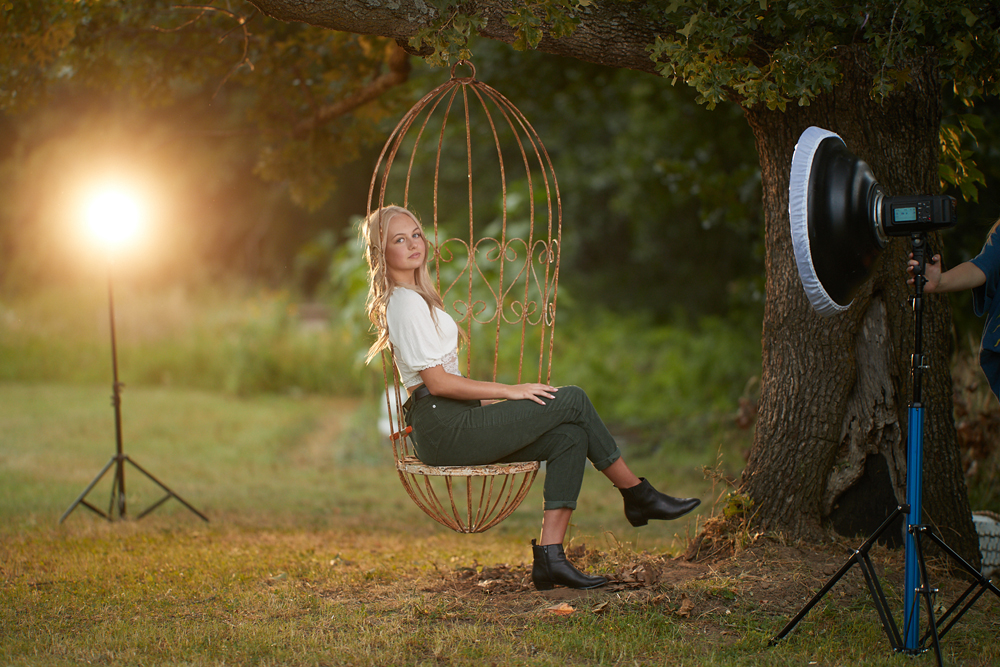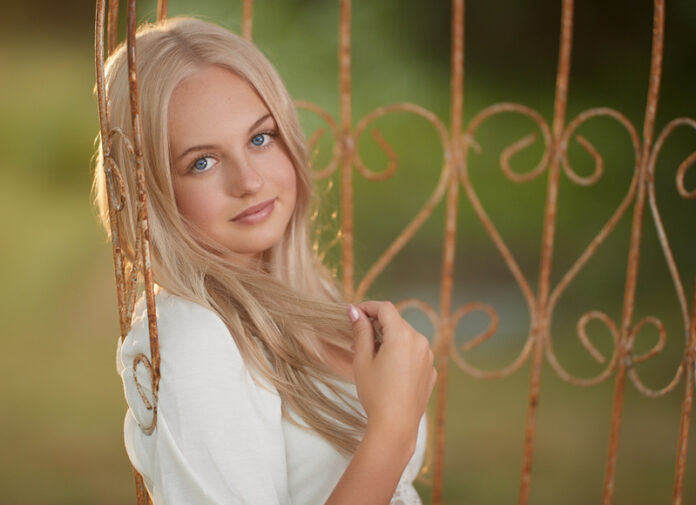by Gary Box
Texas School Instructor
One thing I always try to do, no matter what, is to follow through. I’ve been known to do some crazy things like hanging over the top of a cliff for a rock climber or lying on the ground as a motocross rider jumps over me on a motorcycle… just to get the right shot. But sometimes it is far more basic than that. Sometimes it’s as easy as controlling the sun!
Each high school senior I photograph is looking for a style all their own. To assist me in designing a roadmap to their style, I ask them to build me a Pinterest board of ideas they like. Some prefer bold and dramatic while others prefer soft and whimsical. Some prefer a mix. Based on the images in their “idea board,” I can get a feel for what they want. I believe in “inspiration” as opposed to “duplication,” so I don’t copy anything exactly as it is presented to me. Typically, the ideas they show me are primarily about feeling or the mood. Do they like lens flare? Do they like black-and-white? Do they like close-ups or distant images?
One day, a second generation senior (I had photographed her mother as a senior) came to me with several images that had sunset elements in them. However, on the day of the senior photo shoot, it was cloudy. There was no sun. I had to deliver, no matter what. No problem! I’ve got this!

Since I utilize off-camera-lighting for most of my outdoor portraits, I chose a Mola Demi beauty dish on a MoLight Godox 600. Because I was trying to simulate elements of sunshine, I didn’t want light that was too soft or mushy. But what about that sunset? The answer was a MoLight Godox 200 Pro with the round head and diffuser dome. To simulate the sunset, I placed an amber gel under the dome adding a burst of golden light.
In one image, the light was out of the frame and no extra work needed. In the second image, I actually placed the light within the image, as if the sun was peeking through the trees. I intentionally allowed some lens flare to give that sunset look, being careful not to let it bleed heavily into her face. In the final image, the out-of-focus stand was in the image but that was an easy removal in Photoshop. The results were perfect! She got the sunset look that she wanted, and I got a great order!
 So let’s talk about the lighting setup and power. One thing I teach in my classes is “Set a base, light the face.” We set a base exposure for our environment and background. That’s what the camera is set to. For this session, I was using a Canon R5 with a Sigma 135 f1.8 Art lens. To give me the background base exposure, I ended up at ISO400, 1/750 at f1.8. That’s the BASE.
So let’s talk about the lighting setup and power. One thing I teach in my classes is “Set a base, light the face.” We set a base exposure for our environment and background. That’s what the camera is set to. For this session, I was using a Canon R5 with a Sigma 135 f1.8 Art lens. To give me the background base exposure, I ended up at ISO400, 1/750 at f1.8. That’s the BASE.
The face exposure, however, was a little underexposed, so the next step is to LIGHT THE FACE by bringing in the main light and adjusting its power for a perfect soft look. An important part is that I light from the same side and the prevailing ambient light. Do NOT light the shadow side! I want the shadow side, the ambient light, and the off-camera flash to work TOGETHER, building up layers of light as we progress across the face. This keeps the light looking more natural than if you essentially cross-light with the ambient from the left and the flash from the right.
Adjusting the power of the off-camera flash provided the proper amount of brightness on the face… not enough, and it won’t quite pop or light the eyes enough… too much, and it starts to look flashy and fake. You can set your starting exposure using a guess in manual mode or use TTL as a starting point. Dial it up or down until you have the perfect look.
Finally, the kicker light is always set to manual. Since it’s flashing only the edge of the subject, there is not really enough of the sensor being lit by that flash to get a good TTL reading. So I always put my kicker light on manual and usually pretty low power to start with and I can adjust it up or down until I have the desired effect.
 Gary Box will be teaching “High School Seniors – Inside the Box” at the 2023 Texas School of Professional Photography. His class will cover the scope of the business from marketing, pricing, and sales, as well as lighting, posing, and image design. Gary has been a full-time photographer for 33 years in the small town of Sapulpa, near Tulsa, Oklahoma.
Gary Box will be teaching “High School Seniors – Inside the Box” at the 2023 Texas School of Professional Photography. His class will cover the scope of the business from marketing, pricing, and sales, as well as lighting, posing, and image design. Gary has been a full-time photographer for 33 years in the small town of Sapulpa, near Tulsa, Oklahoma.











